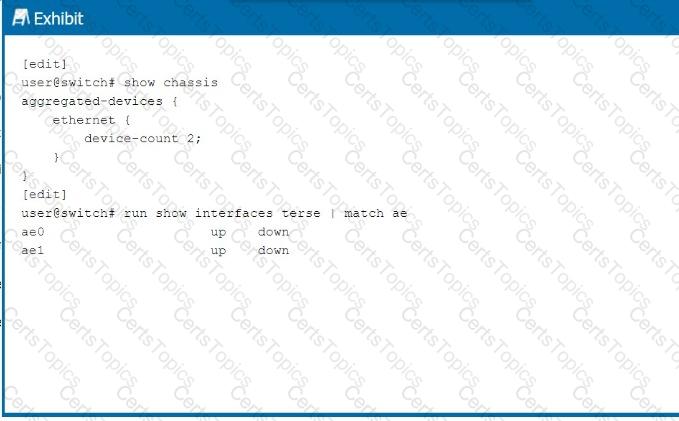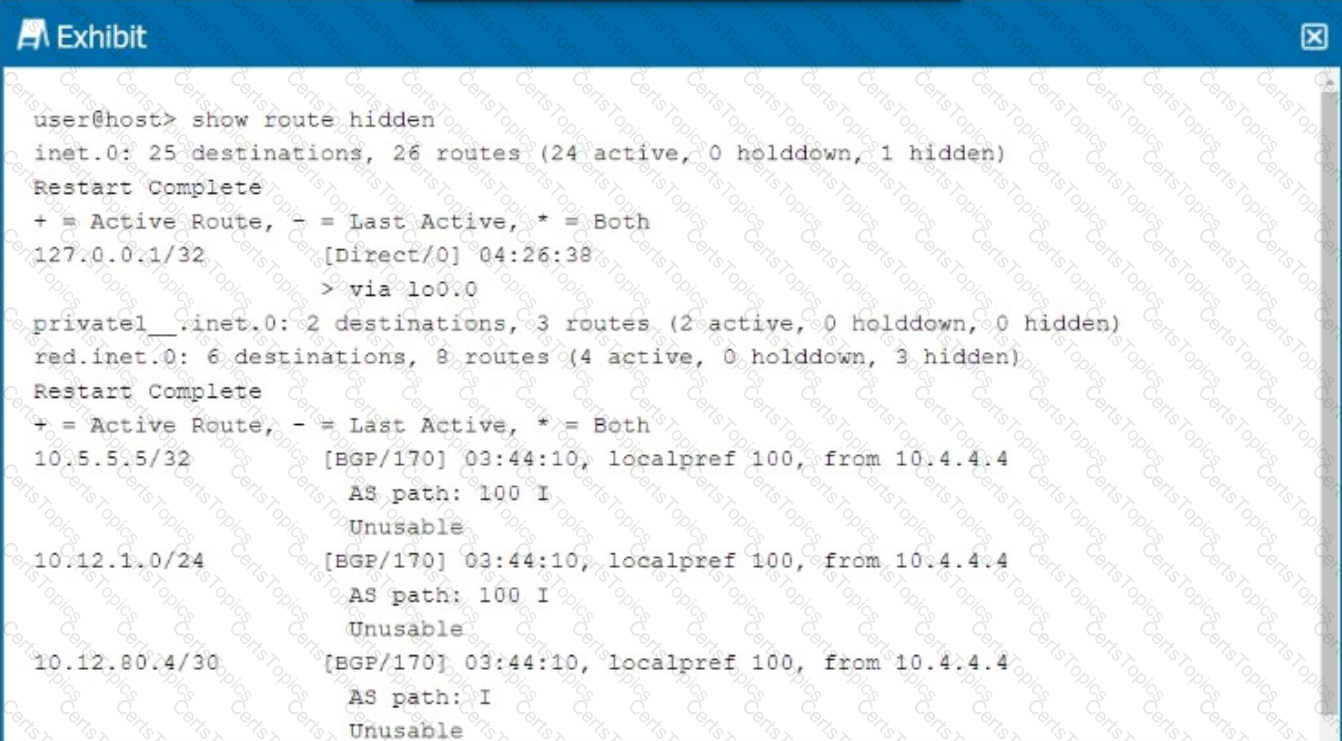Referring to the exhibit, you notice that after committing the configuration, the ae0 and ae1 interfaces appear in a link down state.

Which statement is correct in this scenario?
What is the definition of a trunk interface on a switch?
When troubleshooting an OSPF neighborship, you notice that the router stopped at the ExStart state. What is the cause of this result?
What are two device roles in a five-member Virtual Chassis? (Choose two.)
Which statement is correct about per-flow load balancing?
Layer 2 interfaces operate in which two modes? (Choose two.)
A generated route is configured under which hierarchy?
You want to minimize topology disruptions in your network when the rpd process restarts on a device. Which service would accomplish this task?
Which two statements are correct about aggregate routes and generated routes? (Choose two.)
What is the main purpose of Bidirectional Forwarding Detection (BFD)?
Which state in the adjacency process do OSPF routers check the MTU size?
A switch receives a frame with a MAC address of FF-FF-FF-FF-FF-FF. Which action will the switch take on this frame?

Referring to the exhibit, why are the BGP routes hidden?
When considering bidirectional forwarding detection, which two statements are correct? (Choose two.)
What are two consequences of having all network devices in a single collision domain? (Choose two.)
Leaf and spine data centers are used to better accommodate which type of traffic?
What information in the Ethernet header is used to populate the bridging table?
Which three actions are required to implement filter-based forwarding? (Choose three.)